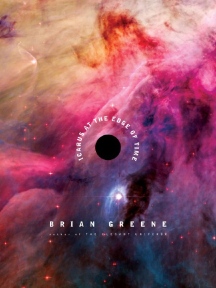It's the nature of myth to re-told, re-cycled, re-imagined into one
world after another. Myths are by their nature malleable, stories stripped
down to an essence that can be brought to life, a seed that can be planted
in the fertile soil of new societies and new imaginations. Pulitzer-prize
nominee Brian Greene shows just how it should be done with 'Icarus at
the Edge of Time', a 34-page board book that brings the Icarus myth
into the world of realistic space opera. In fact, this may be one of
the more potent and imaginative entries into the space opera sub-genre
of science fiction. With fewer words than most writers have on their
dust jackets, Greene takes the reader into the future and creates characters
we care about whose experience of extrapolated science manage to have
real emotional heft. Adding to the delight and the science of the package
are images from the Hubble telescope with stunning art direction and
design by Chip Kidd.
In the near future, humanity gets proof positive of life on Alpha Proxima.
A generation ship is sent forth, and Icarus is stuck in the middle.
He was born after the ship left earth but will die before it reaches
its destination. When the ship needs to change course, Icarus makes
a bold decision.
Greene uses his words well. There aren't very many, but he does manage
to evoke true empathy and emotion for his characters and their situations,
as well as discussing some quite interesting scientific theories and
playing out their implications in a dramatic manner. The sparse prose
is ably complimented by the incredible presentation. Kidd does not inject
any CGI tomfoolery into the Hubble images, though he's happy to select
and crop them for drama. Don’t go looking for spaceships; you
won’t find any here. What you will find is cutting-edge science
and killer astrophotography whipped up with clean, crisp, classy graphic
design.
As a board book, 'Icarus at the Edge of Time' is cleverly designed.
You can read it without destroying it. It's sturdy and slick. It's also
a new kind of science fiction space opera as well as a new kind of children's
book. It really does hold up with an appeal for anyone who is interested
in science, storytelling or fathers and sons. That might add up to a
sizable audience. They'll be well-rewarded, and it's good that the book
can withstand multiple readings. It will get read and re-read; it is,
after all, a myth.
